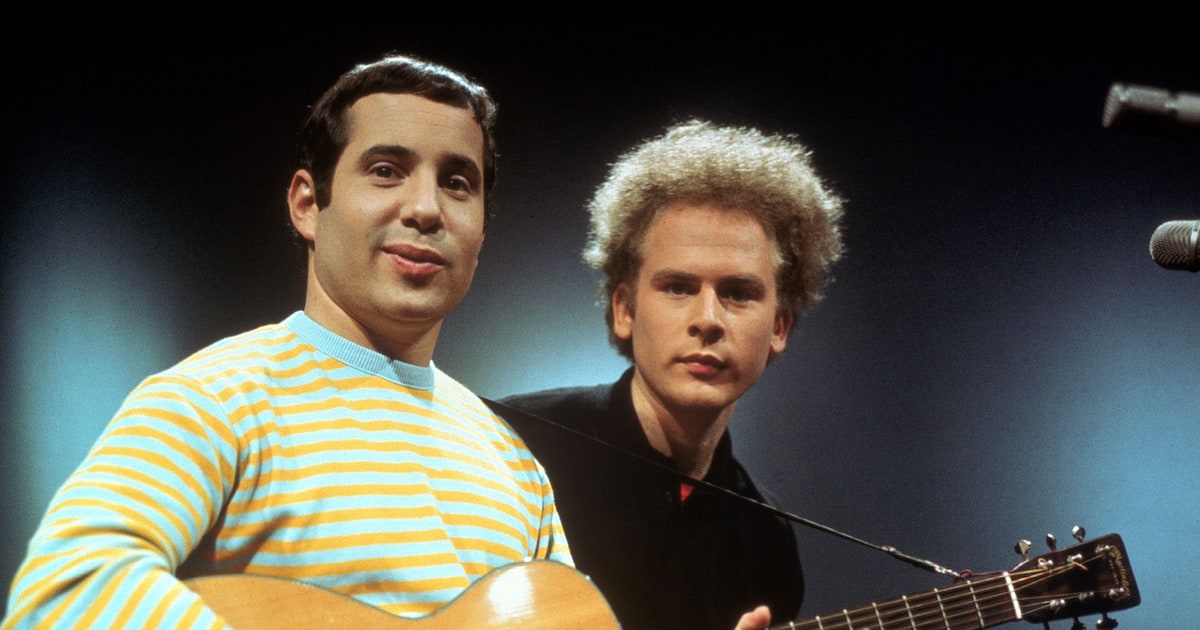

So the choice was made to cast Dustin Hoffman as Benjamin and Anne Bancroft as Mrs. However, Day refused to do a nude scene, and Mike Nichols was convinced that nobody would find Redford credible as an insecure nerd. Robinson and Robert Redford would play the male lead, Benjamin Braddock.

Apparently the original idea was that Doris Day would play Mrs.
Simon and garfunkel songs in movies movie#
This was a major hit in fact, every single member of the cast of that movie was nominated for an Academy Award. His first movie, Who’s Afraid of Virginia Woolf, starred the husband-and-wife team of Richard Burton and Elizabeth Taylor in a film version of Edward Albee’s caustic play. In 1966, Nichols turned his attention to directing films. Nichols then set his sights on Broadway, and rapidly became one of its most successful stage directors. The two had released a number of best-selling comedy record albums. Nichols had originally been a big success when he teamed up with Elaine May to form a comedy duo. The movie was directed by Mike Nichols, with a script written by Buck Henry and Calder Willingham. The Graduate was a 1967 film based loosely on the novel of that name by Charles Webb. We will then return to Simon and Garfunkel.

We will now take a detour to discuss the movie The Graduate, and the relationship between the movie and the song Mrs. Simon and Garfunkel were a dynamite duo and for as long as their partnership lasted, their albums went straight to the top of the charts. There was some grumbling from folk purists: they didn’t like the pop touches and wasn’t it a bit much that Simon and Garfunkel assigned themselves songwriting credit for Scarborough Fair, a traditional tune at least a couple of centuries old?īut these were minor quibbles. Several of the songs on this album had been written by Simon during his period in London.
Simon and garfunkel songs in movies plus#
In addition to the song Scarborough Fair/Canticle, the album included such hits as Homeward Bound and The 59th Street Bridge Song (Feelin’ Groovy).Īgain, this album combined Simon and Garfunkel’s beautiful harmonies with Simon’s acoustic guitar, plus a number of pop touches here and there – a harpsichord, some memorable keyboards, chimes, and bongos. Their next album, the October 1966 release Parsley, Sage, Rosemary and Thyme, was another blockbuster. But the re-packaged folk-pop Simon and Garfunkel songs were smash hits. Simon was horrified to see his “pure” folk song turned into folk-rock. Unfortunately, Tom Wilson neglected to tell Paul Simon that his track was being re-mixed. The tune then became a blockbuster hit, reaching #1 on the Billboard Hot 100 pop charts and establishing a tremendous demand for Simon and Garfunkel songs. Inspired by the recent musical style introduced by The Byrds, Wilson converted The Sound of Silence into a folk-pop hybrid, and re-released it. Although the album was initially a flop, that song started to gain traction on the East Coast when a Boston DJ began playing it on his show.Īt this point, producer Tom Wilson decided to re-mix the song by adding an instrumental backing. Simon and Garfunkel’s career was kick-started by the tune The Sound of Silence from their 1964 album, Wednesday Morning 3 A.M. In that post, I mentioned that I saw Paul Simon in fall 1965 when he was performing solo in London.īelow is a photo of Art Garfunkel and Paul Simon at a concert in Madrid in 1967, at the start of their European tour.

We have previously written about Simon and Garfunkel in our blog post on their song Bridge Over Troubled Water. Then we will review two covers of this song, one by Bon Jovi and the second by The Lemonheads. We will then review the movie The Graduate, with an emphasis on the importance of music in the film, and in particular the song Mrs. We will start with a brief review of the career of Simon and Garfunkel. It was featured in the 1967 movie The Graduate, directed by Mike Nichols and starring Dustin Hoffman. This is a terrific folk-rock song written by Paul Simon. Hello there! Welcome to a new feature: “Tim’s Cover Story Goes To The Movies.” In this series, we will discuss a famous song that makes an important contribution to a major motion picture.


 0 kommentar(er)
0 kommentar(er)
